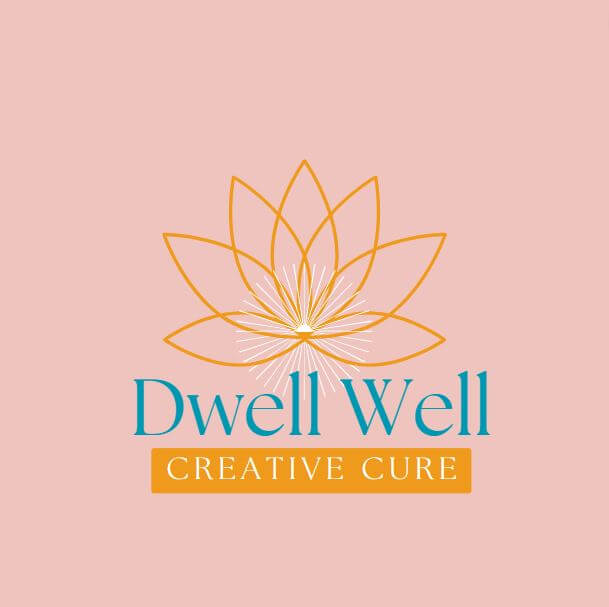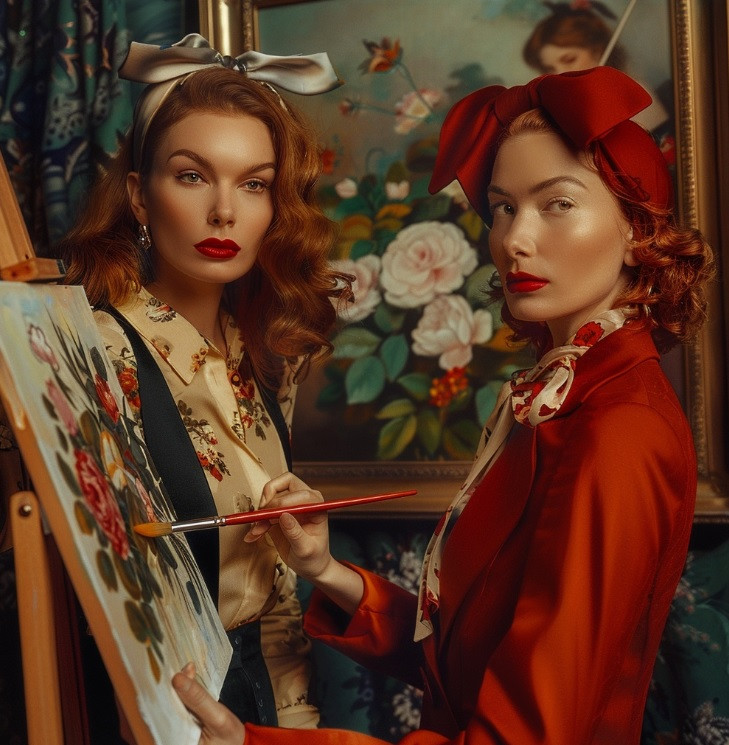
Creativity can serve as a mirror to women.
It reflects our multifaceted, multi-dimensional lives. It allows us to navigate through our thoughts, emotions, and experiences in a therapeutic manner. It empowers us. Creativity is not just about crafting art; it's about crafting the self, nurturing the self, and establishing an inner dialogue that fortifies resilience, innovation, and confidence. Whether it's painting, writing, dancing, or any form of artistic endeavor, these activities become pathways to joy and self-discovery, helping women to thrive.
For those of us who struggle to simply sit down and "meditate", creativity serves as a source of meditation; allowing us to overcome anxiety by immersing ourselves in our craft and letting our minds wander.
Moreover, engaging in a creative practice can also offer women a sense of community and belonging, connecting them with like-minded souls who share their passions and struggles. This can foster a supportive environment where ideas are born, and accomplishments are celebrated, fostering a feeling of achievement and belonging.
As women carve out time to create, they not only sharpen their skills but also begin a journey of personal growth and fulfillment. Thus, embracing creativity is not just a leisurely pursuit but a vital component of well-being, enabling women to find their voice, assert their independence, and unleash their true potential.
1. Painting and Drawing: Unleashing the palette of emotions through colors and shapes, enabling personal expression in the most vibrant forms.
2. Writing: From journaling to blogging, poetry to storytelling, writing serves as a powerful avenue for sharing perspectives, healing, and inspiring others.
3. Dance: A physical form of creativity, dancing allows for self-expression through movement, offering both emotional release and physical health benefits.
4. Gardening: Cultivating a connection with the earth through planting and nurturing seeds, flowers, and plants offers a serene and grounding creative outlet.
5. Photography: Capturing moments, framing perspectives, and telling stories through the lens provides a unique avenue for artistic expression and appreciation of the world.
6. Fashion Design and Makeup Artistry: Expressing individuality and creativity through clothing, accessories, and makeup application, allowing for a personal statement in every stitch and design.
7. Cooking and Baking: Transforming ingredients into dishes is not just an act of nourishment but an art form that brings joy and satisfaction through flavors and presentation.
8. Music: Whether it's playing an instrument, singing, or songwriting, music opens up profound channels for emotional expression and connection.
9. Pottery and Sculpting: Shaping materials with hands into beautiful objects not only is therapeutic but also gives a tangible form to creativity.
10. Crafting and DIY Projects: Engaging in various crafts such as knitting, scrapbooking, or upcycling projects fosters innovation and gives a productive outlet for imaginative ideas.
These creative outlets not only help in enriching a woman's life with joy and satisfaction but also empower her to explore and embrace her unique identity and capabilities.


Understanding your budget before beginning an interior design project is crucial for both you and your designer.
It ensures that your designer can tailor their resources most effectively within your financial parameters.
With a clear budget in place, your designer can make informed decisions on materials, furnishings, and labor costs, avoiding wasteful overspending while ensuring that the project aligns with your financial comfort zone. This upfront transparency fosters a smoother design process, ensures that your expectations are realistic, and helps in delivering a final outcome that brings your vision to life without any unwelcome financial surprises.
Clear Expectations: Knowing your budget helps set realistic expectations on the scope, materials, and furnishings, ensuring a harmonious designer-client relationship.
Efficiency in Design: A predefined budget streamlines the selection process for materials and products, saving time and focusing efforts on attainable solutions.
Cost-effective Solutions: A well-planned budget allows designers to recommend cost-effective alternatives that don't compromise on aesthetics.
Flexibility with Priorities: Understanding your budget gives designers the flexibility to allocate resources effectively—prioritizing key areas while identifying potential savings elsewhere.
DIY Virtual Design Packages: For those mindful of budgets or preferring a hands-on approach, many designers offer virtual design packages. These cater to various budget levels, providing professional guidance and resources for a successful DIY interior project.
A few questions to consider when doing Design on a budget:
Which rooms are the most used?
Often times a Designer can allocate dollars to a room that is more important to you. For example, the sofa you sit on every day should be of good quality to wear well whereas the headboard in a guest room could be a more affordable option as it only needs to look great, but does not need to be of the same quality for everyday wear and comfort.
Are there any decor items that could be repurposed and used in a new in different way?
Sometimes this can save you money and sometimes it can be more expensive. A fresh coat of paint on a table is a great way to save whereas reupholstery can cost as much as a new piece and is usually only advised for heirloom treasures.
If you feel you have some pieces worth repurposing, take a full inventory of them at the beginning of a project for yourself or your Designer. Your Designer must know all the pieces of the puzzle in the beginning as fabrics, finishes and space planning include these items. Bringing these repurposed items into the mix in the middle of the project will usually end up costing you money in design fees as they can disrupt a whole room plan and cause more billable hours.
What parts of your project are most urgent?
Splitting up a project into phases keeps costs manageable and helps you break down decisions into manageable pieces.
It is important, however, when working with a Designer to have a broad stroke, master plan in place at the beginning so that the space as a whole has a cohesive appearance.
Communication is key! The more you communicate with your Designer ( or map things out for yourself to make sure you aren't forgetting any of your own needs) in the beginning, the more easily a budget can be met.
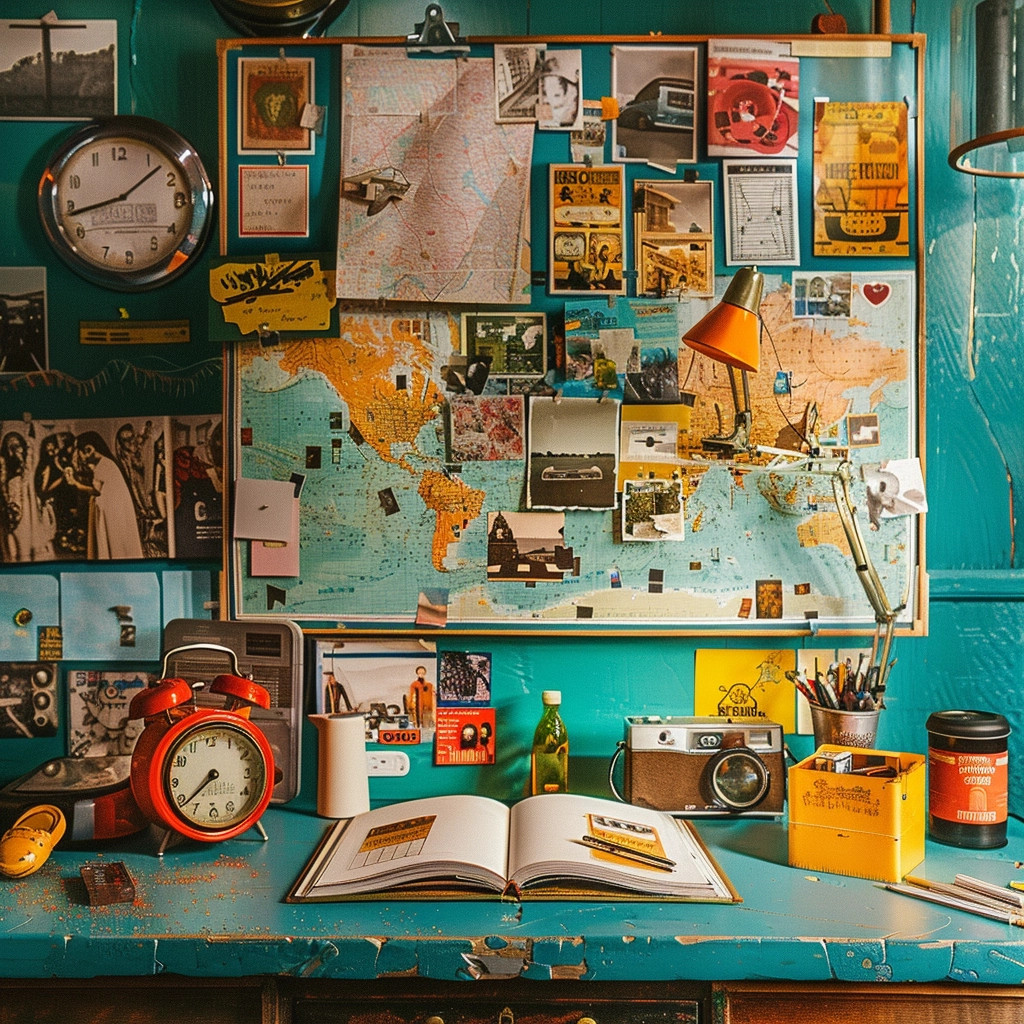
We have all heard of a Vision Board.
But what exactly is it and, most importantly, what can it do for you?
A vision board collage isn’t just a collection of images; it’s a beacon of your dreams, a visual manifestation of your deepest desires, and a powerful tool to inspire creativity.
By carefully selecting images, quotes, and symbols that resonate with your aspirations, you create a personalized mosaic of motivation. This tangible representation of your goals serves not only as a daily reminder of what you’re striving towards but also as a source of inspiration, helping to unlock your creative potential. It’s a way to visualize your future, encouraging you to take the steps necessary to turn your dreams into reality.
Every glance at your vision board is an invitation to immerse yourself in the creativity and passion that drives you, making it an invaluable asset in your journey towards personal and professional fulfillment.
When creating a creative vision board, consider the following:
1. **Define Your Goals**: Clearly identify what you want to achieve to ensure your vision board aligns with your aspirations.
What do you want your overall life to look like? What do you want to feel like when you wake up in the morning? What do you want your family life to look like? What do you want to give back to the world?

2. **Gather Inspiration**: Look for images, quotes, and items that truly resonate with you and spark creativity.
What artist, writer, gardener, musician, etc. do you like or follow that gives you the warm and fuzzies? Where do you want to travel? What colors bring you energy or peace?
3. **Variety of Sources**: Use magazines, photographs, drawings, and even text to enrich your vision board with diverse visuals.
Cut and paste is always fun (and a great way to engage with your family :) but websites like Pinterest are fast and easy as well. Canva even offers FREE "Vison Board" templates you can use. I suggest you print these finished board still and hang in a visible space or, at the very least, use them as a screen saver on your monitor, you see them every day.
4. **Color Scheme**: Choose colors that inspire you or reflect the mood you wish to invoke through your goals.
Pick an overall scheme of these favorite colors and use it for the foundation of your board.
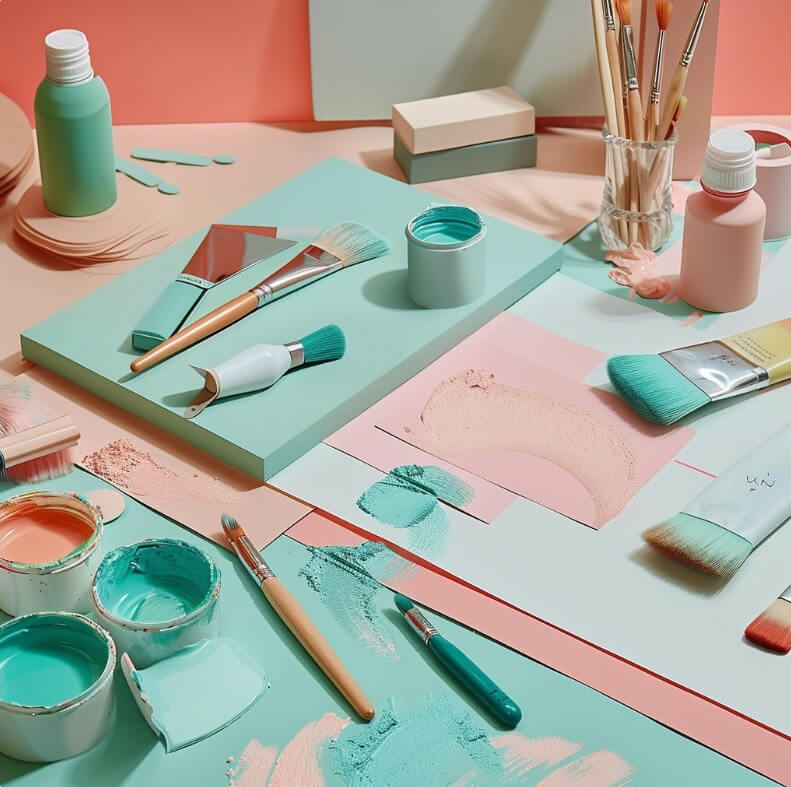
5. **Layout Matters**: Plan the arrangement of your elements for cohesion and aesthetic appeal.
I suggest putting your most important "broad strokes" or general feeling right smack in the middle of your board with your secondary elements off to the sides.

6. **Include Affirmations**: Positive affirmations can boost your morale and keep you motivated towards your goals.
Search Pinterest for "Inspirational Quotes" and save what means the most to you. Look up your favorite hero and see what they have said in their interviews or books. Or hey girl, create your own! You know best what you need to hear every day and you are a creative in your soul!
7. **Personalize It**: Make sure it reflects your personality, making it more meaningful and inspiring to you.
This is important. Paste what REALLY speaks to you, not what you think SHOULD speak to you.
We are all on our own path. This exercise is about YOU.
If you are in a depressed state or going through a hard time, start small and look for any sliver that uplifts you. It could be a picture of an animal that makes you smile. It could be a picture of a loved one that you are close to. Put these front and center. Put secondary inspiration around those images.
8. **Keep It Visible**: Place your vision board somewhere you can see it daily to continuously remind and motivate you.
Find a space of your own. It doesn't need to be a room, it can be a corner; but make it YOURS. This board goes there, front and center. Even if it's on your computer monitor. ( IF you are on that computer every day- if need be, put it on your office computer- just remember your company can see it and you may want to omit the "new job" clipping on your board!)
Tips on crafting your own creative space: https://dwellwellcreative.com/landing/dwell-well-creative-giveaway
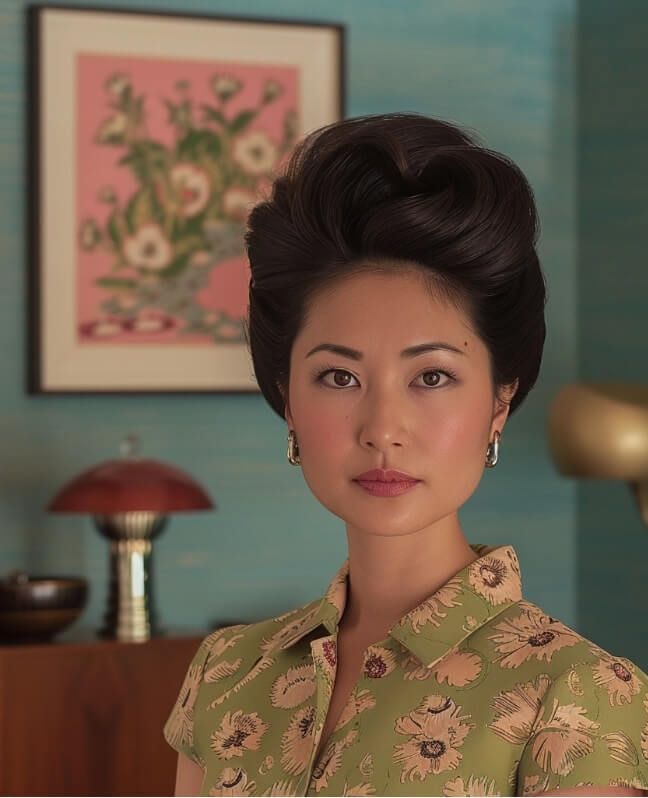
9. **Update Regularly**: Your goals and inspirations will evolve, so revise your board as needed to reflect your current aspirations.
New people, places and things will inspire you often if you keep your eyes open. You WILL evolve. You WILL grow. You WILL be able to explore new things and craft a creative life. This means some of the things on your board you may outgrow or need to upscale to get you to the next level.
10. **Reflect and Act**: Don’t just view your vision board as a piece of art; let it inspire action and creativity in your daily life.
This is where goal setting comes in. Every day start by looking at this board and coming up with one INTENTION for your day. Close your eyes. Think about it. Say it out loud. Live it! We can do anything for one day.
Up your accountability by inviting a few friends or family members to join you!

